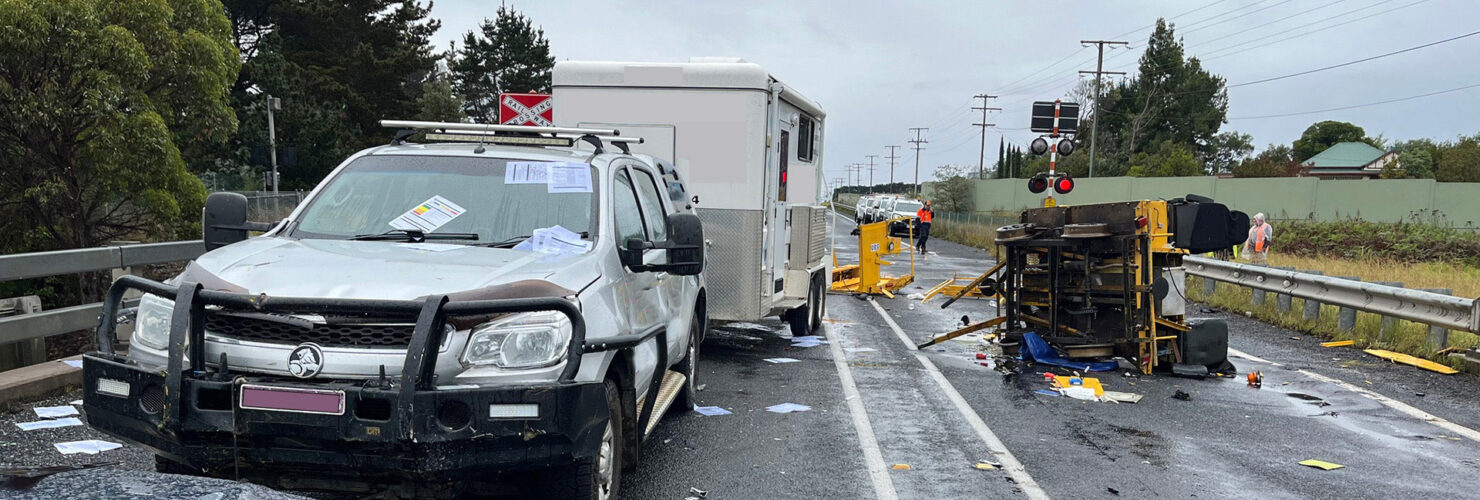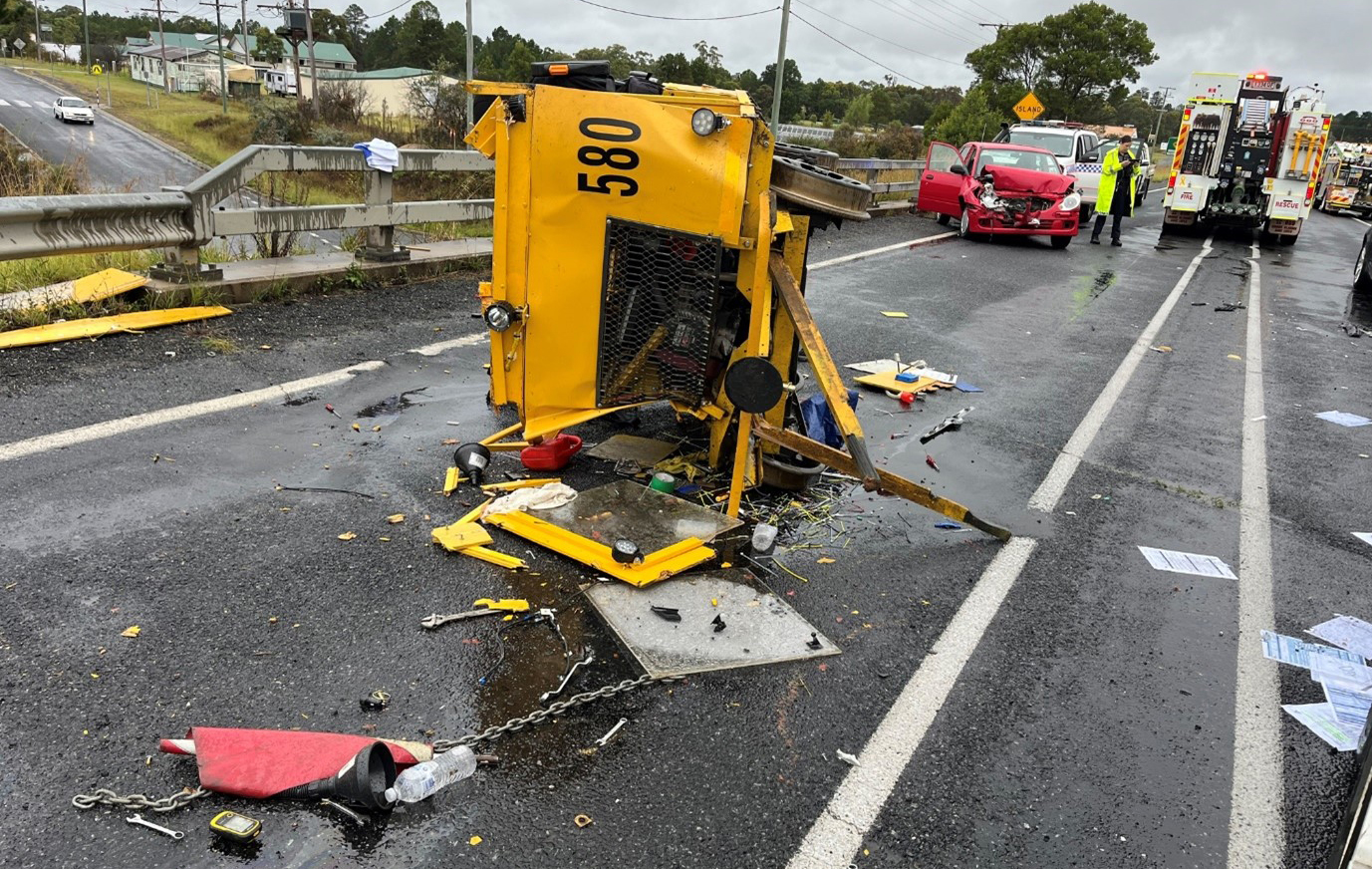Tuesday, September 10, 2024
Section Car-Road Vehicle - LX collision - 24/03/2024 - A Case Study
This safety case study by ONRSR details the key risk management takeouts for rail transport operators from our investigation into a recent level crossing collision.

At a Glance
WHAT HAPPENED?
At approximately 11:25am on Sunday, 24 March 2024, a heritage rolling stock section car and a road vehicle (4WD) collided at a level crossing on the New England Highway in Southwestern Queensland. The two occupants of the section car sustained serious but non-life-threatening injuries. At the time of the incident the level crossing infrastructure was in full working order.
Section cars are small railway track vehicles that, in this case, are used in conducting tours of regional areas under an agreement with the Rail Infrastructure Manager.
WHY?
The road vehicle driver did not stop at the level crossing in response to active warning equipment and advanced warning signs which resulted in the collision. However, the section car entering the crossing at a speed that meant it was unable to stop in the event of an obstruction on the track was also a contributing factor.
ONRSR DRIVEN SAFETY IMPROVEMENTS:
- Improvement Notice issued to Department of Transport and Main Roads (Qld) resulting in installation of the required road marking.
- Prohibition Notice issued to Section Cars Australia Co-Operative to cease operations through level crossings until completion of a review of its safety management system and all risk controls associated with road/rail crossings.
The Investigation
ONRSR investigators determined that the immediate cause of the collision was the failure of the car driver to stop at the crossing having neither observed nor obeyed the warning signs on approach to the crossing and the active signals at the crossing itself. Witnesses confirmed that the active warning equipment (flashing lights) had been operational for up to five minutes and was visible at a distance of more than half a kilometre from the scene of the incident.
Notwithstanding the identification of this immediate cause, level crossing collisions are never simple occurrences that can be explained by, or attributed to, a single action. In this case ONRSR investigators also found that the actions of the operator of the section car contributed to the collision. This was in large part due to the speed of the section car entering the crossing which was not slow enough to allow the section car to stop before being hit by the 4WD – noting that visibility was limited due to environmental factors.
In the development of its safety management system (SMS), the operator had conducted a risk assessment that had duly identified a collision at the level crossing as a rail safety risk to be managed. Among the controls put in place was a requirement for the section cars, which are subject to a 25km/h speed limit, to slow down on approach to a level crossing so as “to have the section car under control so that the section car can be stopped short of any obstruction”.

The section car was travelling at 25 km/h but did not slow down on approach to the crossing and was unable to stop in time to avoid the collision with the 4WD. While the operator believed they had followed all processes, they had in fact contravened their own level crossing collision control to approach level crossings at a suitably low speed – so as to be able to stop the section car in the event of a road vehicle entering the crossing.
There were other mitigating circumstances that contributed to this incident. This included reduced visibility due to weather conditions and the presence of a sound barrier adjacent the highway which impacted operator visibility.
Together these factors reaffirm ONRSR’s view that level crossing safety is a shared responsibility which requires significant, ongoing coordination to identify risks and implement the necessary controls to manage safety SFAIRP. This collision is another reminder of the importance of all parties playing their part.
Drivers (both road vehicle and rail traffic) must be alert and aware when approaching level crossings and obey the road rules, rail transport operators must adhere to the processes and procedures they have in place to manage safety risks, while rail infrastructure managers and road authorities must seek to establish an interface agreement that helps to ensure all relevant warning infrastructure, signage and road markings are present and operational. This is particularly important in regional settings where there is a mix of active and passive level crossings.
Further Information
Earlier this year, a National Level Crossing Safety Roundtable identified ten actions as integral to delivering short-, medium- and long-term level crossing safety benefits in addition to actions under the National Level Crossing Strategy. They were assigned to multiple agencies and cover topics such as driver education, camera technology, a code of practice for train visibility, better use of telematics and data, a review of the road and rail manager agreements and a renewed investigation into penalties for drivers who disobey road rules at level crossings.
This list of solutions is by no means exhaustive and requires a concerted, collaborative effort by all rail and road safety stakeholders.
For its part ONRSR recently submitted a draft Train Visibility at Level Crossings Code of Practice to Australia’s Infrastructure and Transport Ministers for consideration and approval. The outcomes of the submission are expected in late 2024.